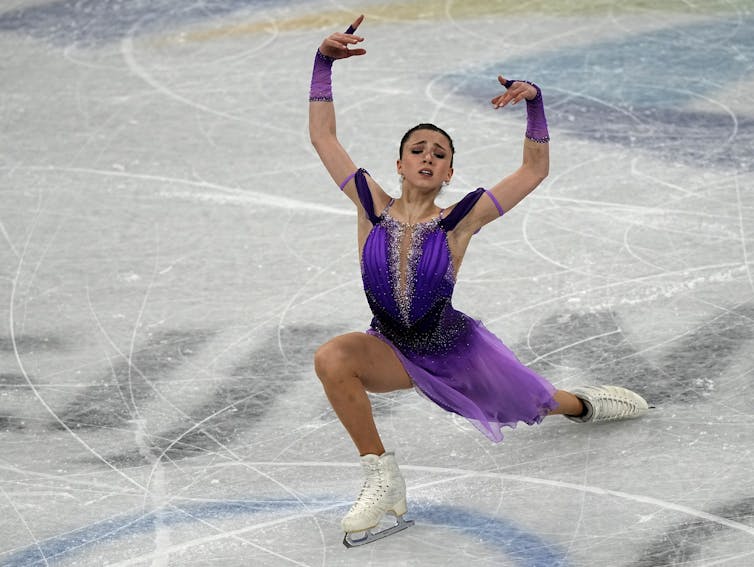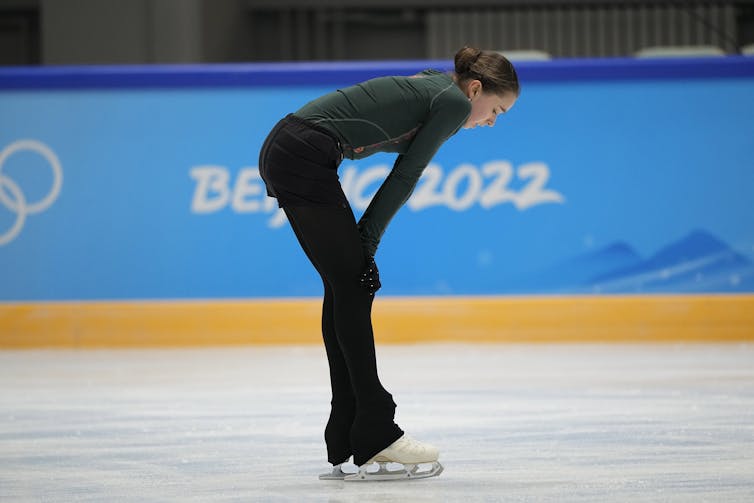
As the first woman to land a quadruple jump at the Olympics, 15-year-old Kamila Valieva became instantly famous. She also helped Russia win a gold medal in the team figure skating event.
Then it was revealed her December 2021 drug testing sample had found trimetazidine, a banned substance according to the World Anti-Doping Agency (WADA). The same sample also found L-carnitine and hypoxen, two non-prohibited substances. L-carnitine is acknowledged as a natural health product, but none of the substances are approved drugs under Health Canada.
The circus of Valieva’s suspension, hearing and decision to let her compete clouded the Olympics. Ultimately she placed fourth in the individual figure skating event — a disappointing finish for the gold medal favourite.
Trimetazidine
As a lifelong figure skater and a physician who often prescribes heart medications for medical reasons, I was intrigued by the drugs. How do they work? Are there side-effects? Who would be legally allowed to be take the banned substance?
Trimetazidine is classified as a second-line cardiovascular agent, meaning it is used when the first choice treatment has not worked on its own. The European Society of Cardiology recommends its use by people with known coronary artery disease (the main cause of heart attacks) to relieve symptoms of chest pain (also known as angina).

Trimetazidine is unique among anti-anginal medications. Most anti-anginal medications work by balancing the heart muscles’s supply of oxygen with its demand for oxygen. Instead, trimetazidine increases tolerance to low oxygen states at a cellular level by inhibiting energy production derived from fats (fatty acid metabolism) and stimulating glucose metabolism (a more efficient process).
A potential side-effect of the drug that was investigated by the European Medicines Agencyis the development of Parkinson’s disease-like movement disorders.
L-carnitine
The remaining two drugs are not prohibited substances banned by WADA. L-carnitine may sound familiar as it is an easily available supplement for athletes in North America, although its benefits are debated. L-carnitine is classified as an antioxidant by Health Canada. It is an amino acid derivative that also occurs naturally in the body.
The theory is that L-carnitine helps the conversion of fatty acids into energy, especially in the heart and skeletal muscles where it is found in higher concentrations. It may also help reduce post-exercise muscle damage by playing a regulatory role in muscle/protein balance and acting as an anti-inflammatory. Too much supplementation at high doses can cause gastrointestinal symptoms like nausea, vomiting, cramping or diarrhea, or a “fishy” body odour.
Carnitine supplements can be medically indicated for people with low blood carnitine levels due to genetic diseases or chronic kidney impairment, but it has also been studied in many different diseases including cardiovascular disease and Type 2 diabetes.
Hypoxen
Hypoxen is probably the most mysterious drug of the three. It is an antihypoxant, which are used to treat hypoxia (lack of oxygen in blood or tissues). The published research on this drug in humans is minimal. There is no medical indication for its use. A quick internet search reveals it is sold online as an exercise supplement.

When we exercise our muscles require more oxygen. For athletes at the Olympic level with extreme training schedules, there may not be enough oxygen available leading to occasional lack of oxygen (hypoxia) in the muscles. The return of oxygen (post-exercise re-oxygenation) results in damage to muscle cells (via inflammation and oxidative stress). Based on one study, this is why hypoxen, with antioxidant properties (which mitigate oxidative stress), is supposed to reduce inflammation and contribute to greater endurance and capacity to recover after exercise.
Performance in figure skating
Figure skating is not a sport that benefits from the stereotypical doping image of steroids and muscle bulking. Rather, drugs might be used to enhance endurance training, promote recovery after strenuous exercise and allow for more time on ice to develop muscle memory.
Information about the nature and potential effects of the substances identified in Valieva’s drug test, along with some understanding of what might enhance a figure skater’s performance, can help observers make sense of the doping scandal playing out in Beijing.
Related to the subject of the article and research within the article, Jasmine Mah has no relevant disclosures.
This article was originally published on The Conversation. Read the original article.







